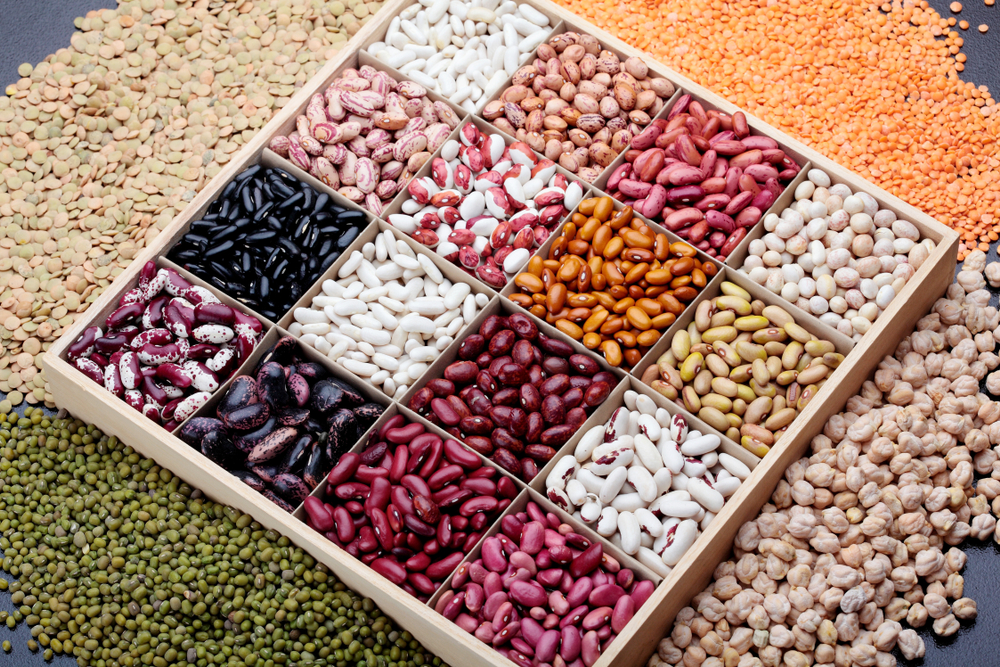Should you buy dried or tinned beans to reduce your environmental impact?
Over recent years, consumers have become more concerned about the environmental impact of the products they buy, especially food. The simultaneous rise of the zero waste movement has meant a lot of focus on the packaging of our food, arguing that we need to be eliminating our household waste and opting for the option with the least packaging.
This seems quite a reductive view.
Lets take beans as an example. The zero waste movement would suggest that you should buy dried beans as an alternative to tinned. Ideally, you’d buy these unpackaged from a local bulk store or zero waste shop. But if that’s not available to you, you’d still be better off buying a bag of dried beans in your local supermarket, rather than buying tins of beans. By buying them in dried form you are reducing the amount of packaging required, therefore reducing the energy required to produce the product, and reducing the waste you generate by buying it.
It may not be that simple.
All beans are initially processed in the same way, regardless of their end packaging. Mature bean plants are cut down and either left to dry in fields or taken to a processing factory to be dried by machine. They’re then washed, milled, polished and packed into bulk bags. If they’re destined to be sold as dried beans, they’ll then be decanted into smaller bags to be made ready for the shelf.
If they’re going to be sold as canned beans, there are a few additional steps before they reach the shelf. They’ll be hydrated, either with a long room-temperature soak or a quicker hot soak. They’ll then be cooked and sterilised in a ‘retort’ — essentially a large pressure cooker.
These additional steps make it appear that buying dried beans is more environmentally friendly. Add on top of that the energy and resources required to produce the stainless steel cans the beans are then packaged in. Plus, these beans are then packaged in water, meaning they are heavier and take up more room than dried beans, so they also require more energy in transportation.
So, it’s likely true that when you buy beans on the shelf, dried beans are more environmentally friendly. However, your dried beans still require cooking. Once they reach your kitchen they’re going to need ~8 hours of soaking in a pan full of water, and then a further 30 minutes to 2 hours to cook in a second pan full of water. This is not energy efficient. Contrast that to how canned beans are cooked on a large-scale in industrial pressure cookers, and you can see how the story becomes a little more complex.
One study suggested that cooking dried beans at home requires 11 times the amount of energy than it takes at a processing facility.
So should I buy dried or tinned beans?
Ultimately the difference in environmental impact between canned and dried beans is always going to be pretty small. It’s also likely to vary a lot, depending on the origin of the beans, the method of transport used, the efficiency of the processing facility and of your hob etc. And it’s important to note that opting to eat beans and other plant proteins instead of meat and animal products is a far more influential decision in terms of your carbon footprint. Decisions like eating less meat, choosing active forms of transport, and using your voice politically to inspire change are all decisions that are as, or more, important than the amount of rubbish that you produce (and here’s why).
The point is that looking at the packaging of a product alone doesn’t tell the full story of its environmental footprint.
It’s great that so many people are becoming aware of the environmental impact of consumer goods, and it’s especially important that we consider how food gets to our plates. Today we’re very far removed from what we eat, and we don’t know very much about how it was produced and processed. We have no real way of knowing what the difference in environmental impact between a supermarket’s dried beans and canned beans is, because we have no personal knowledge of the process, and there’s a lack of transparency about it from manufacturers, processors, and retailers.
Denmark recently revealed plans to start labelling food with its environmental footprint, in a bid to give consumers more transparency around how their food was made and delivered to them. This, to me, seems to be the way forward. By providing individuals with the information about how their food is impacting the environment, we would make these kinds of decisions much easier. We would give consumers back the power to make decisions around what food to buy, without the constant worry that those decisions could be compromising our values or moral views.

